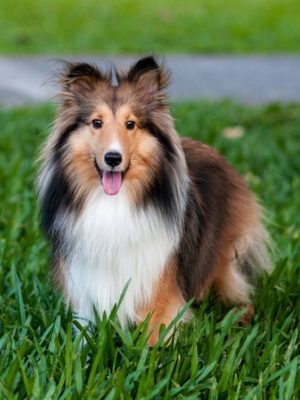Shetland Sheepdog
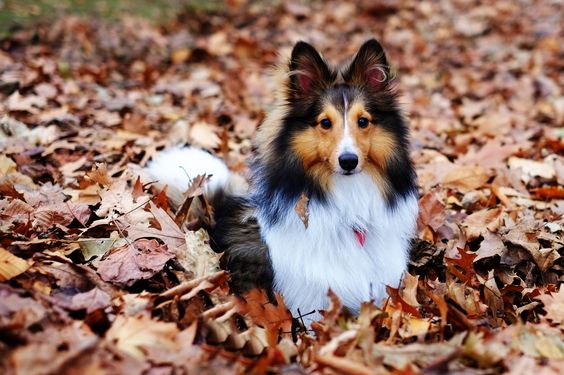
Shetland Sheepdogs are very energetic, absolutely non-conflictive, and affectionate. They are great with children, play sports, and spend time actively and quickly learn to obey commands. Sheltie likes a lot of attention and quickly finds common ground with the whole family. Does not like a lot of noise and loud noises, compassionate and in need of mutual love.
Table of Contents
Breed Information
| Another Name | Shetland Collie, Dwarf Scotch Shepherd, Sheltie |
| Origin | Scotland |
| Height | Males 37 ± 2.5 cm Females 35.5 ± 2.5 cm |
| Weight | 6.8-11.3 kg |
| Fur | Double, long, straight, rigid |
| Color | Sable, tricolor, blue-merle, black and white, black and spaniel |
| Lifespan | 12-14 years |
| FCI Classification | Sheepdogs and Cattledogs (except Swiss Cattledogs) |
| Group | Service dogs |
| Price | $200-410 |
Breed Photos
Origin History
Shetland Sheepdogs originated from the islands of Scotland, where they were used as herding dogs. But Shetland dogs were not in charge of guarding the herd but only managing it. It was the small size of the dogs, which did not frighten the wild animals. After a while, the herds increased, there was more work, and little Shelties were replaced by larger sheepdogs, which managed the pack and protected it. So the breed was on the verge of extinction.
What saved the dogs was that people soon began to use the Shetland Sheepdog as a pet and a faithful companion.
In 1914, the first Sheltie Club was founded in England, which pointed out that the Sheltie was close to the Miniature Collie. In the early twentieth century, dogs began to be crossed with long-haired Collies. In 1948, after World War II, the Shetland Sheepdog gained worldwide recognition as a breed.
Appearance
The height of the dogs differs depending on the sex. Males are about 37 cm, females 35.5 cm. It is allowed to fluctuate by 2-3 cm. The weight of the dogs is about 7-12 kg.
Shetland Sheepdog has a very lush, silky double coat. The first layer is a long and stiff coat; the second is a soft undercoat. The Sheltie mane is very dense, which gives the impression that they have a big head. On the muzzle, the hair is short.
They have a fascinating color: they can be pure color or shades from light gold to dark. The shadows are very pronounced. Shelties can also be tricolor, black and white, or black and brown. White spots are rare but can be on the forehead, chest, and tip of the tail.
Character
Shetland Sheepdog s are very energetic, absolutely non-conflictive, and affectionate. They are great with children, play sports, and spend time actively and quickly learn to obey commands.
Sheltie likes a lot of attention and quickly finds common ground with the whole family. Does not like a lot of noise and loud noises, compassionate and in need of mutual love.
The Shetland Sheepdog loves to play a lot, and she may not care what. The main thing is to show her your attention and care.
Often dogs are used as babysitters for children, as they love to spend time with them and protect them.
Pets need frequent contact with their owner, so it is not suitable for those who spend a lot of time at work or on the road.
Care
Dogs are hardy to weather conditions, even the lowest temperatures because their fur is quite warm. Can live in a city apartment and feel comfortable. With the same enthusiasm, can spend the whole year outside near the house in an aviary.
The coat should be combed out twice a week, the claws should be trimmed regularly, and the ears and eyes should be checked for cleanliness.
If you live with a Shetland Sheepdog in an apartment, you should give about three hours a day for a walk in the fresh air and exercise.
A nice fact is that the hair of dogs does not have the typical dog smell. Bathing should be done about every 2-3 months with a special shampoo.
Training
Only one person should train a Shetland Sheepdog – better if it is his owner. It is the only way to teach him different commands. The ideal time to start training is 2 to 4 months.
Dogs have an urge to please their owners at all times, so they will always try to obey all commands and remember information quickly. Don’t skimp on praise and encouragement: they love it, and it will motivate them.
Shelties love to show people different tricks and to be noticed. Therefore, you can choose a place for training where you will not be alone.
Common Diseases
Shetland Sheepdogs have good health but can still suffer from joint dysplasia, cataracts, epilepsy, and Willenbrand-Dian’s disease is common.
Nutrition
The diet should be balanced. Sheltie will gladly eat rice, oatmeal, and buckwheat porridge. It is also essential to feed meat (preferably raw), fish (sea fish), fruit (pears, apples, bananas), but not sour ones. It is advisable not to give berries.
It is recommended not to give milk but replace it with cottage cheese, kefir.
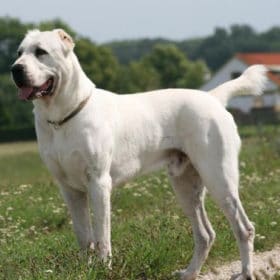 Central Asian Shepherd Dog
Central Asian Shepherd Dog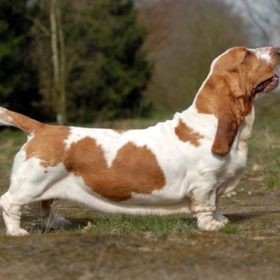 Basset Hound
Basset Hound Beagle-Harrier
Beagle-Harrier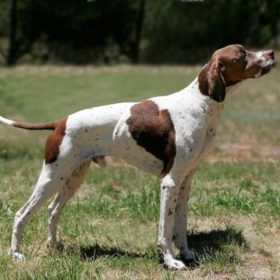 Pointer
Pointer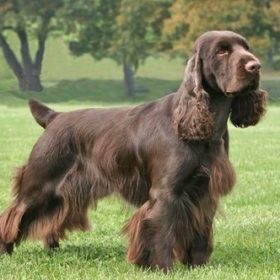 Field Spaniel
Field Spaniel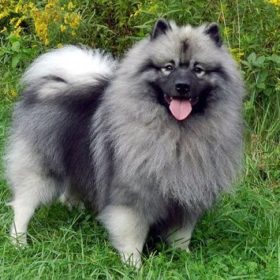 Keeshond
Keeshond
